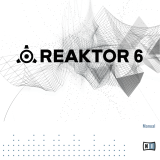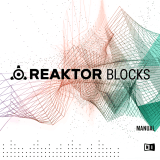Page is loading ...

Home » Noise Engineering » Noise Engineering Jam Jam Four-Channel Trigger/Gate/Clock Processor
Instructions
Noise Engineering Jam Jam Four-Channel Trigger/Gate/Clock Processor Instructions
Noise Engineering Jam Jam Four-Channel Trigger/Gate/Clock
Processor Instructions
Manuals+ — User Manuals Simplified.

Type Trigger/gate/clock processor
Size 6 HP
Depth .9 inches
Power 2×5 Eurorack
+12V 40Ma
+5V 0mA
Jam Jam is a four-channel trigger and gate processor with three modes: Random, Clock Phase, and Gate Delay.
JJ is so versatile, you’ll find use for it in every patch.
Add a bit of variety to your patch with Random mode: use fourn channels of individually adjustable probability to
process gate or trigger patterns.
Use Clock Phase mode to add some organic feel to your sequences—or break them in and out of sync
completely.
Gate Delay mode is a powerful timing tool useful for anything from
precise adjustments for latency compensation to big changes for creative patching: delay events from sub-
millisecond adjustments to huge delays of over 15 seconds.
Jam Jam is a musical and fun utility you won’t want to be without. And with voltage control over each channel in all
modes, Jam Jam is a completely new way to work with binary signals in your patches

Etymology
Jam – from English: “to improvise on a musical instrument with a group; to take part in a jam session” Jam –
from English: “a difficult situation or state of affairs”
Or Jam – from British English: “a fruit spread; very delicious on toast with tea”
“A difficult jam session (we’ve all been there) but there are great snacks”
Power
To power your Noise Engineering module, turn off your case. Plug one end of your ribbon cable into your power
board so that the red stripe on the ribbon cable is aligned to the side that says -12v and each pin on the power
header is plugged into the connector on the ribbon. Make sure no pins are overhanging the connector! If they are,
unplug it and realign.
Line up the red stripe on the ribbon cable so that it matches the white stripe and/or -12v indication on the board
and plug in the connector.
Screw your module into your case BEFORE powering on the module. You risk bumping the module’s PCB against
something metallic and damaging it if it’s not properly secured when powered on.

You should be good to go if you followed these instructions. Now go make some noise!
A final note. Some modules have other headers — they may have a different number of pins or may say NOT
POWER. In general, unless a manual tells you otherwise, DO NOT CONNECT THOSE TO POWER.
Warranty
Noise Engineering backs all our products with a product warranty: we guarantee our products to be free from
manufacturing defects (materials or workmanship) for one year from the date a new module is purchased from
Noise Engineering or an authorized retailer (receipt or invoice required). The cost of shipping to Noise
Engineering is paid by the user. Modules requiring warranty repair will either be repaired or replaced at Noise
Engineering’s discretion. If you believe you have a product that has a defect that is out of warranty, please contact
us and we will work with you.
This warranty does not cover damage due to improper handling, storage, use, or abuse, modifications, or
improper power or other voltage application.
All returns must be coordinated through Noise Engineering; returns without a Return Authorization will be refused
and returned to sender.
Please contact us for the current rate and more information for repairs for modules that are not covered by our
warranty
Interface
Jam Jam is a four-channel trigger and gate processor with three modes. The
mode behaviors are described below.

Mode selection applies to all four channels, but channel values can be edited
separately. Each channel has a button that enables or disables it for editing; when a channel is enabled for
editing, the LED next to its button will flash, and turning the encoder will change its settings.
Multiple channels can be adjusted at the same time. If multiple channels are set to different values and then edited
simultaneously, the encoder will respect the
difference in their settings as they are adjusted further.
In 1-4: Gate/trigger/clock inputs. Pulsewidth is respected in all modes (minimum 5ms). Inputs are normalled top to
bottom. Patching to an input breaks normaling from channels above.
Out 1-4: Gate/trigger outputs
CV in 1-4: CV inputs for each channel. Responds to 0-5V.
Channel buttons 1-4: Used to select which channels are edited by the encoder.
Channel selection does not affect CV response. Channel LEDs flash when
selected.
Clear: Resets selected channels to minimum. Tapping again after resetting takes
selected channels to their previous settings.
Edit (encoder): Adjusts selected channels. Press and turn for coarse adjustments, or turn for fine tuning.
Channel behavior varies depending on mode (described below).
Rnd/Phs/Dly: Mode select switch.

Rnd (Random): A probability mode. Randomly skips gates. The encoder and CV input adjusts likelihood that a
gate will be passed through, from 0% to 100%. Tracks the incoming gate pulse width (minimum 5mS).
Phs (Clock Phase): Different from a traditional trigger delay, this algorithm adjusts the phase of an incoming
clock based on clock period, useful for creating slightly out-of-sync and varied sequencer timing. The encoder
and CV input adjust phase offset. The algorithm used for phasing keeps track of incoming pulses and
compensates for incoming modulation, so sequencers will be kept in sync even with extreme modulation and
high BPMs (over 80hz/200 BPM at 24ppqn). It also tracks pulse width of incoming clock signals (minimum
5mS).
Dly (Gate Delay): A simple trigger/gate delay. The encoder and CV input adjust delay time, from roughly 50uS
(0.05mS) to over 15s. The delay tracks incoming gate pulse width (minimum 5mS).
Patch Tutorial
Random: Set the switch to Rnd. Patch a trigger sequence to Input 1. Patch Out 1 to a triggered voice like BIA.
Adjust the randomness by tapping the 1 button (the LED will flash when it’s selected) and turning the encoder.
Since the channels are normalled together, you can patch the other 3 outs to
different voices and adjust their probability independently, too. This creates randomized but somewhat related
patterns from the input rhythm.
Clock Phase: Set the switch to Phs. Patch a clock signal to input 1. Patch output
1 to the clock input of a sequencer like Mimetic Digitalis. Modulate CV 1 with a
signal like a slow LFO or a long envelope to vary the timing of the sequencer.
Similar to the Random patch, multiple sequencers can be run off a single clock. By adjusting their phase either
with CV as above or manually with their encoder, a huge amount of sequencer variation can be achieved while
keeping everything in sync.
Delay: Set the switch to Dly. Patch a slow trigger sequence to input 1, and a few
of the outputs to different triggered voices. Add different delay times to each
channel: small delays will create flam effects, and long delays will create off-beat
patterns and call-and-response effects

Input and output voltages
Jam Jam’s trigger inputs have a threshold of about 1.8V. Its trigger outputs are about 6V. Its CV inputs have a
range of 0V to +5V; CV outside of this range will not harm the module but will be clipped.
Documents / Resources
Noise Engineering Jam Jam Four-Channel Trigger/Gate/Clock Processor [pdf] Instructions
Jam Jam Four-Channel Trigger Gate Clock Processor, Jam Jam, Four-Channel Trigger Gate Cl
ock Processor, Gate Clock Processor
Manuals+,
/






